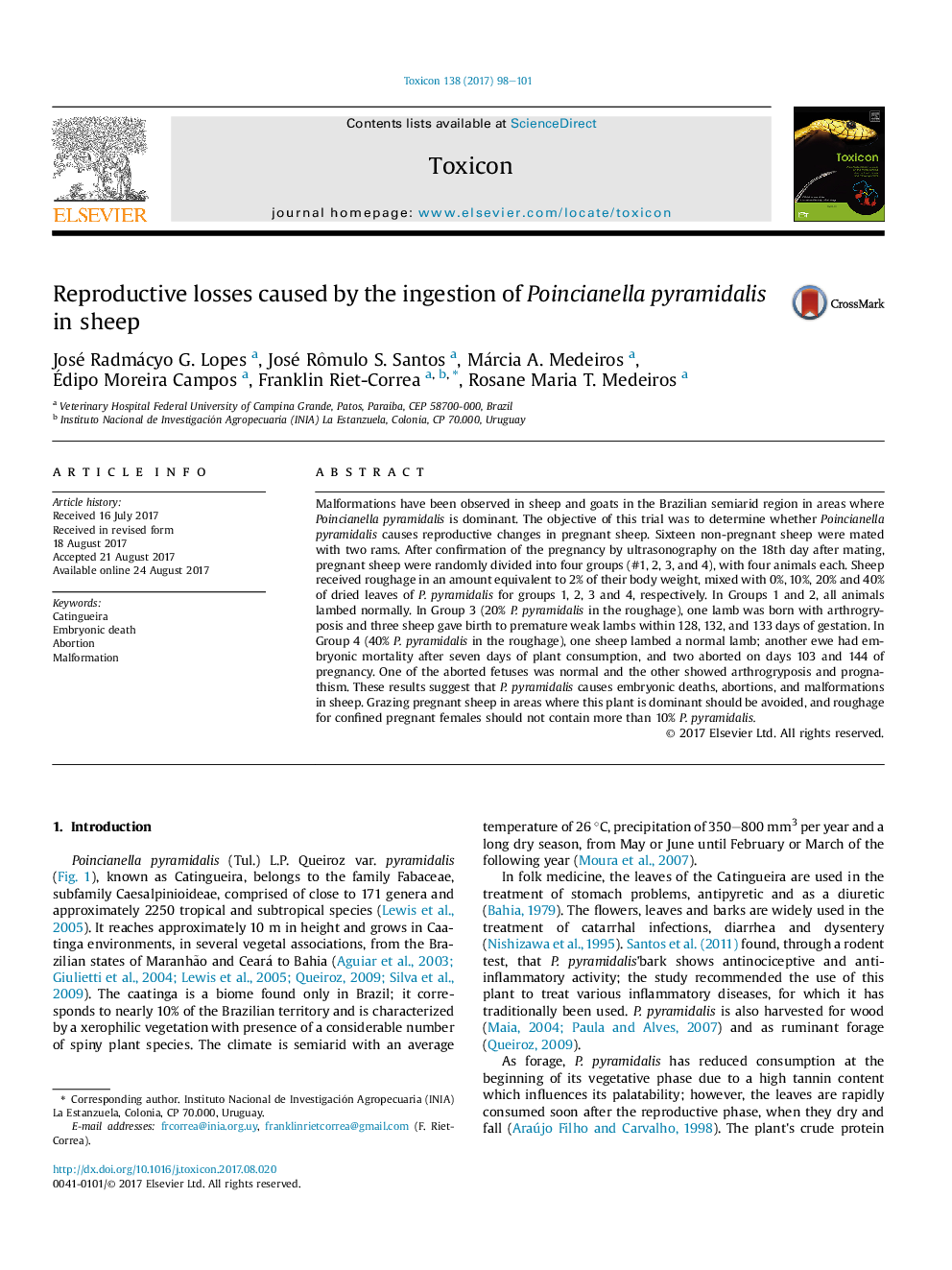| Article ID | Journal | Published Year | Pages | File Type |
|---|---|---|---|---|
| 5519210 | Toxicon | 2017 | 4 Pages |
â¢Malformations and reproductive problems are common in goats and sheep in Northeastern Brazil.â¢In this region with 18 million sheep and goats, losses due to malformations are nearly 520,000 kids and lambs.â¢Malformations and reproductive problems are observed in goats and sheep grazing Poincianella pyramidalis.â¢Experimentally dry P. pyramidalis caused embryonic deaths, abortion and malformations in sheep.â¢Poincianella pyramidalis is a cause of reproductive problems in sheep in Northeastern Brazil.
Malformations have been observed in sheep and goats in the Brazilian semiarid region in areas where Poincianella pyramidalis is dominant. The objective of this trial was to determine whether Poincianella pyramidalis causes reproductive changes in pregnant sheep. Sixteen non-pregnant sheep were mated with two rams. After confirmation of the pregnancy by ultrasonography on the 18th day after mating, pregnant sheep were randomly divided into four groups (#1, 2, 3, and 4), with four animals each. Sheep received roughage in an amount equivalent to 2% of their body weight, mixed with 0%, 10%, 20% and 40% of dried leaves of P. pyramidalis for groups 1, 2, 3 and 4, respectively. In Groups 1 and 2, all animals lambed normally. In Group 3 (20% P. pyramidalis in the roughage), one lamb was born with arthrogryposis and three sheep gave birth to premature weak lambs within 128, 132, and 133 days of gestation. In Group 4 (40% P. pyramidalis in the roughage), one sheep lambed a normal lamb; another ewe had embryonic mortality after seven days of plant consumption, and two aborted on days 103 and 144 of pregnancy. One of the aborted fetuses was normal and the other showed arthrogryposis and prognathism. These results suggest that P. pyramidalis causes embryonic deaths, abortions, and malformations in sheep. Grazing pregnant sheep in areas where this plant is dominant should be avoided, and roughage for confined pregnant females should not contain more than 10% P. pyramidalis.
